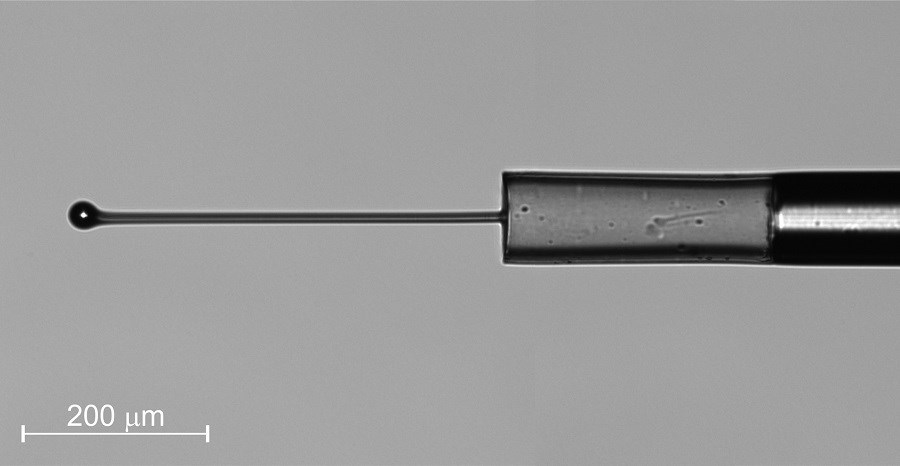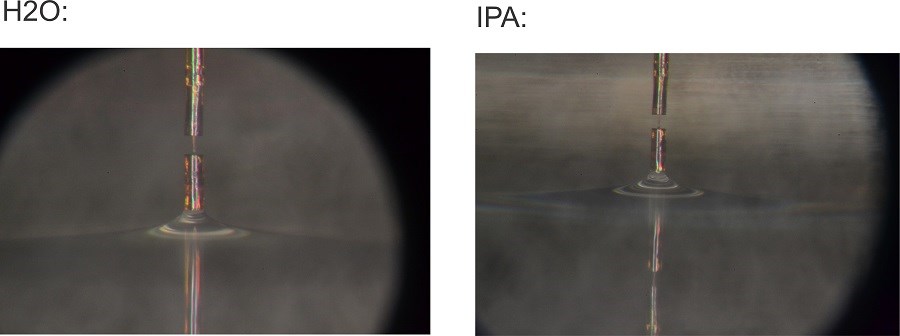A team of researchers has designed a tiny fiber optic force sensor, approximately equal in diameter to a human hair, capable of measuring extremely slight forces exerted by small objects. The light-based sensor is made of silica glass formed into a cylinder. It overcomes the limitations of force sensors based on MEMS, and it could be used in applications spanning medical systems and manufacturing.
Using a micromachining process characterized by a distinct etching process that the researchers initially developed to create complex, all-fiber microstructures, the team based the sensor on an optical cavity known as a Fabry-Pérot interferometer, which is made from two parallel reflecting surfaces. The miniature sensor is equipped with a lead-in fiber at its endpoint, which, together with a thin flexible silica diaphragm, makes up the device’s interferometer.
The force-sensing tip can also be reduced in size to about 10 µm in diameter, making it adaptable to the performance of numerous force-sensing tasks.

Researchers have developed a tiny fiber optic force sensor that can measure extremely slight forces exerted by small objects. It can be immersed in a variety of liquids and doesn’t need additional packaging for most applications. Courtesy of Denis Donlagic, University of Maribor.
When external force is exerted onto a silica post with either a round or cylindrical force-sensing probe on the end, the length of the interferometer changes in such a way that the researchers can measure with subnanometer resolution.
The all-glass construction increases the versatility of the all-optical fiber optic sensor. Though MEMS-based sensors provide miniature force-sensing capabilities, they require application-specific protective packaging, as well as multiple electrical connections. Unless properly packaged, they also lack biocompatibility and cannot be immersed in water.
The new sensor’s features additionally created an air-sealed cavity. The cavity is protected from contamination, making it increasingly amenable for use in biochemical environments. The glass sensor is capable of immersion in a variety of liquids, measures both positive and negative forces, and functions at full capacity for most applications without added packaging.
Denis Donlagic, from the University of Maribor (Slovenia), is the leader of the research team that has introduced the sensor. He is joined by the University of Maribor’s Simon Pevec. Together, the pair demonstrated the ability of the sensor to measure force with a resolution better than a micronewton.

“The high-resolution force sensing and broad measuring range could be used for sensitive manipulation and machining of small objects, surface tension measurements on very small volumes of liquid, and manipulating or examining the mechanical properties of biological samples on the cellular level,” Donlagic said.

The researchers used the new sensor to measure the surface tension of a liquid by measuring the retraction force when a miniature cylinder was removed from water and isopropyl alcohol. Courtesy of Denis Donlagic, University of Maribor.
In application, after precisely calibrating the sensor, the researchers measured Young modulus (a measure of stiffness) of a human hair and a dandelion seed. By completing a process in which they removed a miniature cylinder from a liquid, the researchers also used the sensor to measure the force of retraction.
The researchers ultimately measured force with a resolution of approximately 0.6 micronewtons and a force range of approximately 0.6 millinewtons.
As the size of the force-sensing tip can be reduced, those using it can create sensors of increased complexity. These include those that measure magnetic and electric fields or that determine the surface tension of a liquid.
Though the sensor is ready for use, improving the overload robustness, producing probe tips with other shapes, and/or adding miniaturized packaging could expand its applications. The team is currently working to automate the sensor’s fabrication processes to increase its practicality, its members said.
The research was published in Optics Letters (www.doi.org/10.1364/OL.401690).